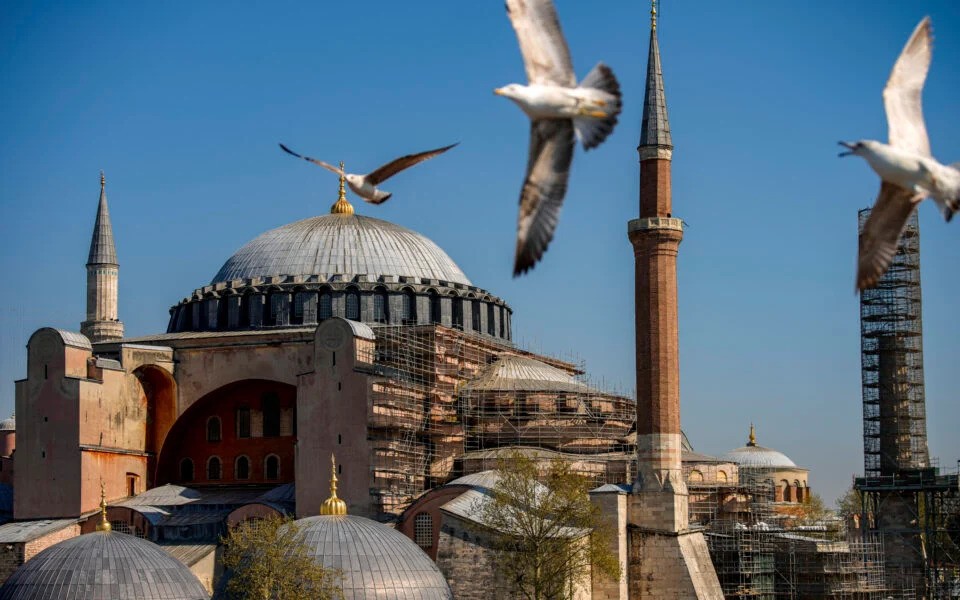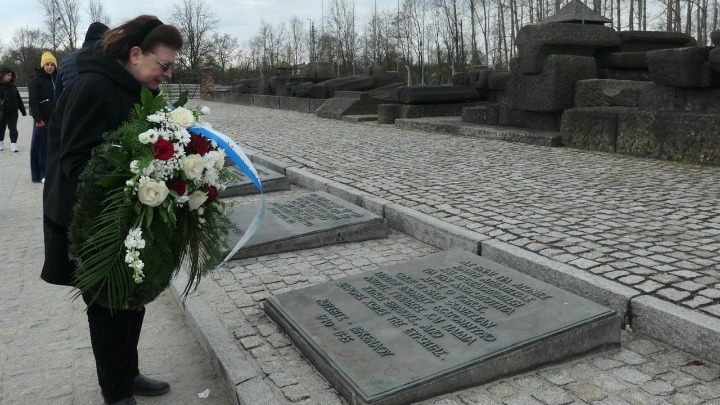Dimitsana, Arcadia: Walking Along the Footpaths of History

Perched atop the fir tree-covered slopes of Arcadia in the central Peloponnese, historic Dimitsana and the surrounding villages are a feast for the senses.
“Can you hear the river?” Eleni asks us. It is impossible not to, even though we are at the top of a hill above the village, at an altitude of 1063 meters, almost 700 meters above the Lousios river. This actually forms part of Dimitsana’s permanent soundtrack, the roar of the rushing waters of the Lousios, which flows through the gorge below the village until it meets the Alfios river further down, near Karytaina. Add to this the sound of the air whistling through, trying to find a way out of the gorge.
The village has been growing in this breathtaking location, on top of two hills and in the col between them, for the past few hundred years. A significant presence in the Greek War of Independence in 1821 and subsequently a main village in the area, Dimitsana is one of the most popular winter destinations located close to Athens.
Many villages in the area boast views over the gorge, but in addition to rushing water and clean air, Dimitsana is also home to stone and gunpowder – in fact, it once produced enough gunpowder to cover the needs all over Greece. Walking past the stone-built towers and old mansion houses through the narrow streets is a unique experience, while history is present on every corner.
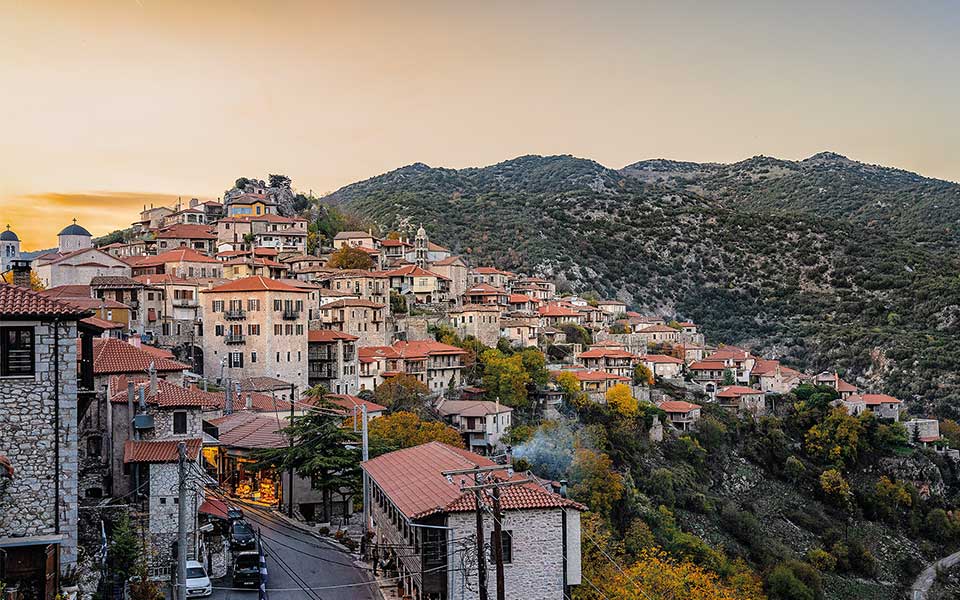
THE ROUTES OF 1821
Start from the Public Historical Library of Dimitsana (tel. (+30) 27950.312.19, Tuesdays – Saturdays, 09.00-14.00), whose operation dates back to 1764 when the seminary “Greek School” was founded in Dimitsana. Alumni of the school include the Patriarch of Constantinople Grigorios V (who was martyred in April 1821) and the Metropolitan Germanos III of Old Patras (who proclaimed the start of the Greek Revolution). Before 1821 the library housed more than 5000 volumes but during the struggle, paper from the books was used to prepare ammunition. The collection grew in the years that followed and today you can see rare volumes and books, and historic artifacts, including the saddle from Papaflessas’ horse.
Next, seek out the houses of Germanos of Old Patras, of Grigorios V and of the Spiliotopoulos family, whose idea it was to revive the production of gunpowder in Dimitsana to support the Revolution. While these buildings are not all open to visitors, the Cultural Center of Dimitsana (tel. (+30) 27950.321.11, Monday – Friday, 10:00-14:00, dimitsanalivingmuseum.gr) has created an information point with maps and recommended routes that are also available online, while they have also indicated historic buildings and monuments in the village with tasteful signs.
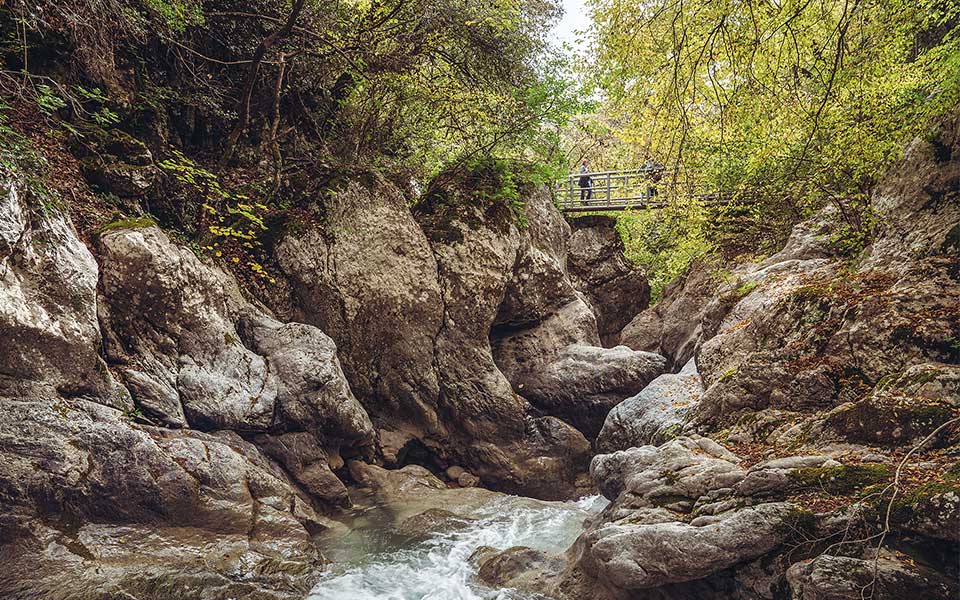
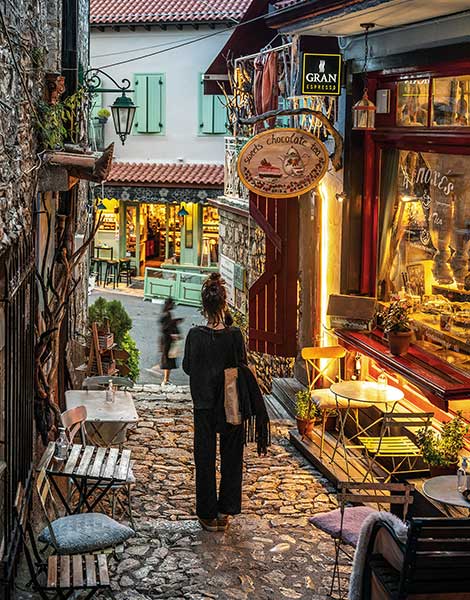
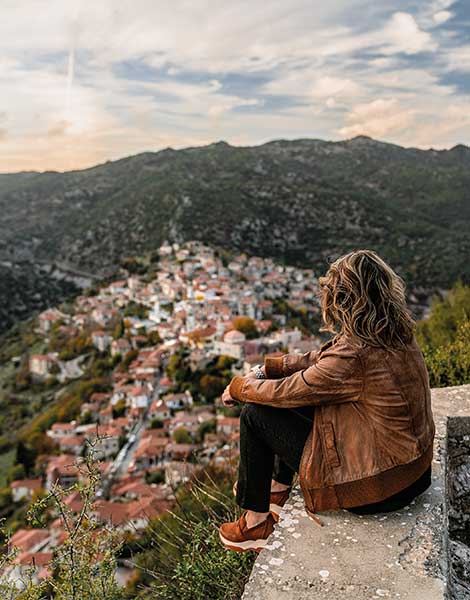
ONE WITH NATURE
Even when the weather is cold and wintery, this does not mean that you cannot enjoy the natural beauty of Dimitsana. Wrap up, pack water and snacks, and prepare for hiking galore, as the area surrounding the village is ideal for mountain explorations. Take in the waters of the Lousios River from up close – the 15-kilometer gorge begins from Dimitsana and ends near Karytaina, where the Lousios meets the Alfios river. The wild, rushing waters do not allow opportunities for rafting, but you can approach the river on foot. The easiest way is by following the signs to Ancient Gortyna, on the way to Stemnitsa from Dimitsana. Leave the car and walk for a bit, until you see the Stone Bridge of Kokkoris.
Alternatively, you can reach the river following the signs to the Monastery of Prodromos, again on the road to Stemnitsa. Following a 15-minute walk from the parking area, you will see the impressive monastery, built into the cliffs. Continue moving towards the old and new Monastery of Philosofos, which you can reach by crossing a small bridge. The route has many inclines and downhill slopes, traverses beautiful landscapes in the forest, and takes about 2 hours. A section of this hike belongs to Section 1 of the famous Menalon Trail (menalontrail.eu), the 75-kilometer trail connecting nine villages in the area. A path to Zigovisti village also begins from Dimitsana, while a portion of the footpath connecting Zigovisti with the village of Elati also goes through fir forests.
Three villages for nearby excursions
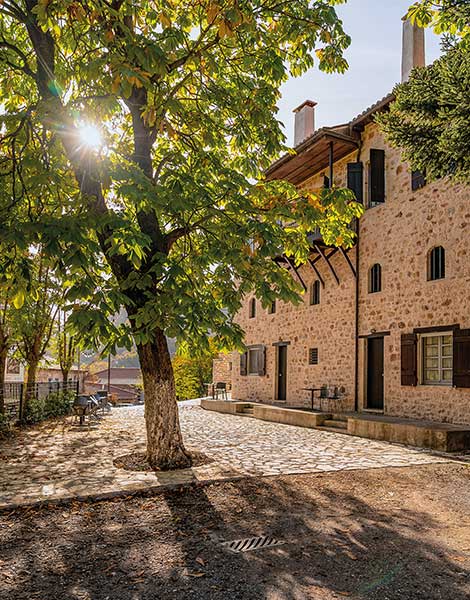
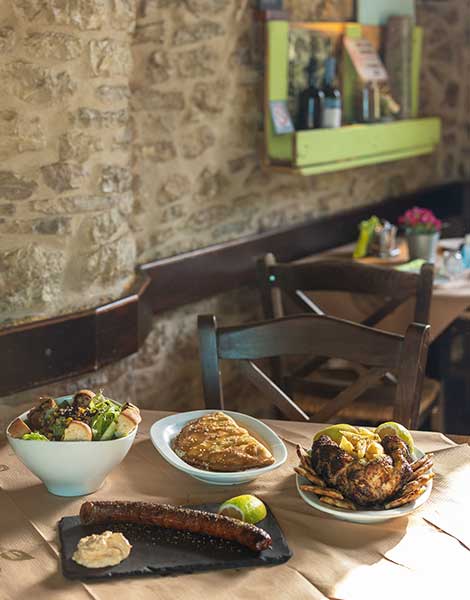
ZATOUNA
Just 4 kilometers from Dimitsana is Zatouna, where the setting is completely different as this quiet village has just one guest house and a couple of tavernas. On your way here, stop at the chapel before entering the village; it is one of the best spots for views over the Lousios Gorge. Tsagari Square is located a little further down, where you will see a stone-built primary school dating from 1919. Today it houses the International Center of Mikis Theodorakis, in honor of the musician who lived here in exile during the dictatorship. Across the way, admire the wonderful architecture of the Church of the Virgin Mary Elovitissa, built in 1854.
Indulge in exceptional meze, well-grilled meats and good prices at Ou Blexeis taverna (tel. (+30) 6973.306.226). Try the lamb with ouzo, thyme and tomato paste, the wild boar with orange sauce and the local specialty, the plexouda (braid), two pieces of pancetta braided together. The grilled fennel pie is also delicious, as well as the steaming hilopites (traditional Greek pasta) topped with grated cheese and fried eggs.
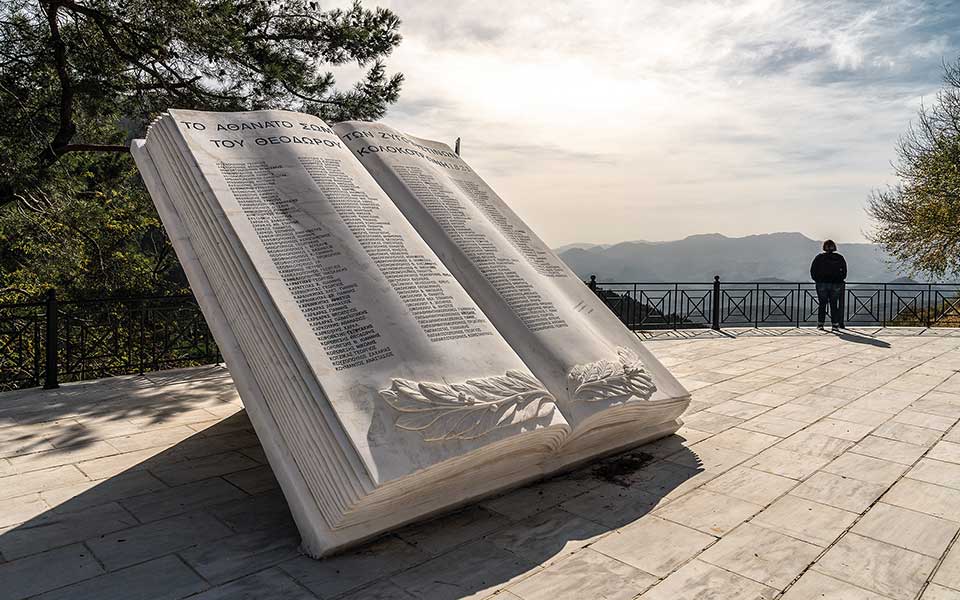
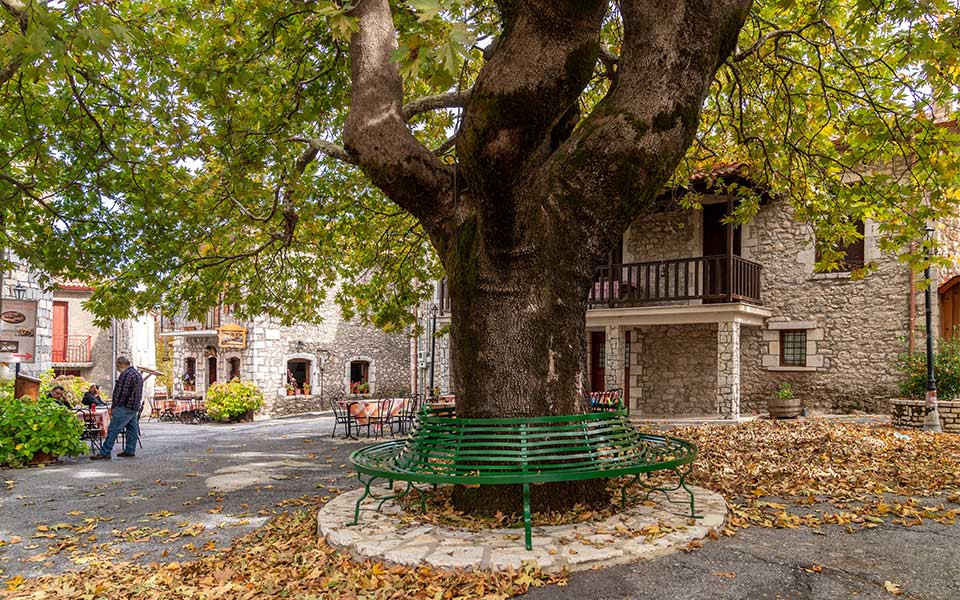
ZIGOVISTI
One of the most mountainous settlements in the Peloponnese, Zigovisti is located about 5 kilometers from Dimitsana, on the road to Stemnitsa. It has been designated a traditional settlement, while its history is also noteworthy, in particular during the 1821 Greek War of Independence. As you enter the village you will see the large marble monument bearing the names of the 200 men who fought alongside Theodoros Kolokotronis.
In the square with the large plane trees, take a seat at Zigovistino Steki for coffee, breakfast and food (tel. (+30) 6944.972.888). Try the local rooster, wild boar, eggs with siglino (cured pork) and delicious meatballs. Climb to the highest point in the village, and turn left at the end of the road. This dirt road is in good condition and about five minutes after the chapel of Aghios Georgios you will arrive at a dense fir tree forest.
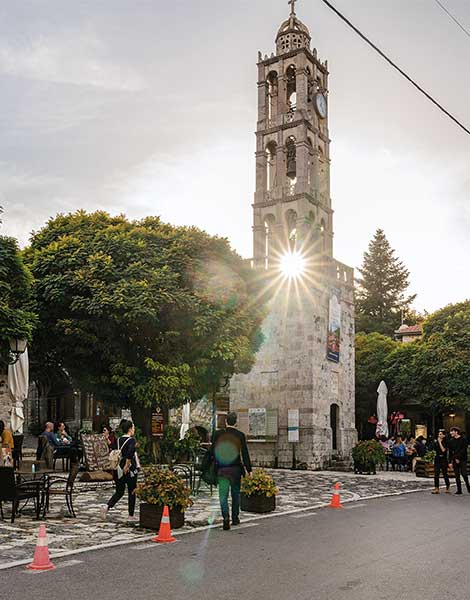
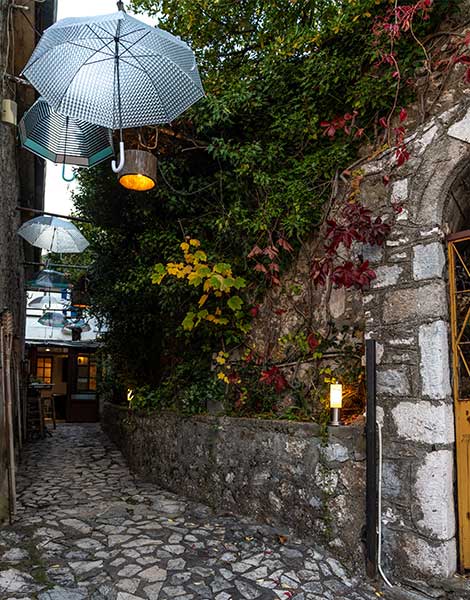
STEMNITSA
Stemnitsa (11 kilometers from Dimitsana) is one of the most beautiful villages of the area, with its stone houses featuring tall ceilings, its stone paved alleys and the main square, where all the action takes place. Parking is rather difficult, so it would be best to leave your car in the parking areas at the entrance of the village. Stemnitsa was once a silver, gold and metallurgic center, with famed artisans travelling around Greece – this tradition continues to this day with the Stemnitsa School of Silver and Goldsmithing, housed in an impressive building that dates from 1926.
Indulge in coffee and dessert at the historic cafe Gerousia (tel. (+30) 27950.812.53) in the main square, in operation continuously since 1870. Just next door, the taverna called Stemnitsa (tel. (+30) 27950.813.71) is known for its juicy lamb chops, which are indeed delicious. Note that you may have to wait for a table during peak lunch or dinner hours.
Source: greece-is.com



